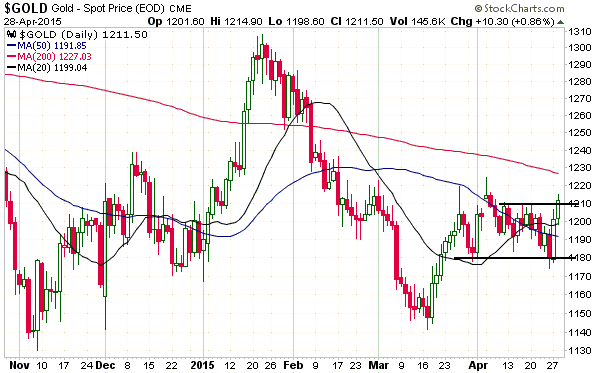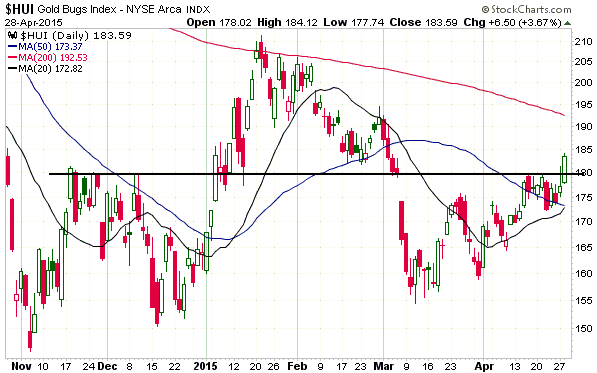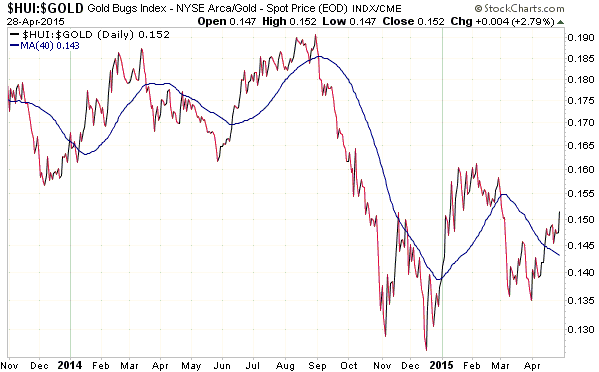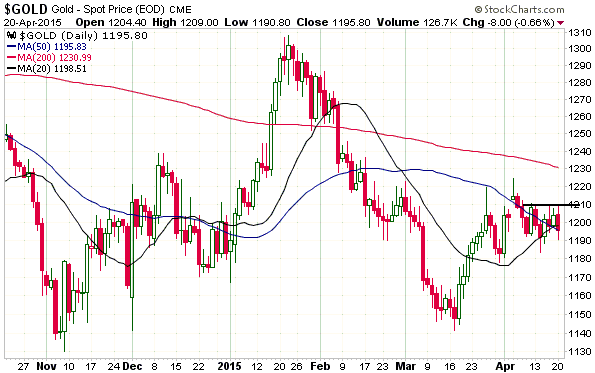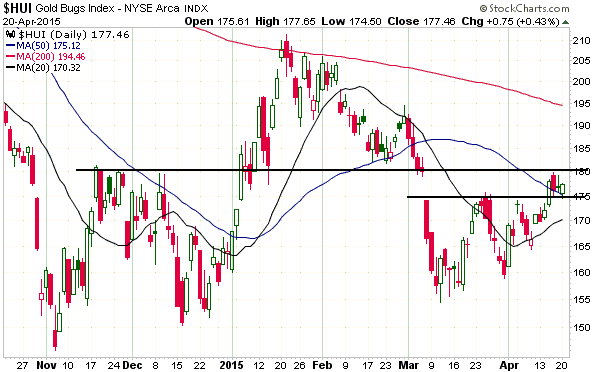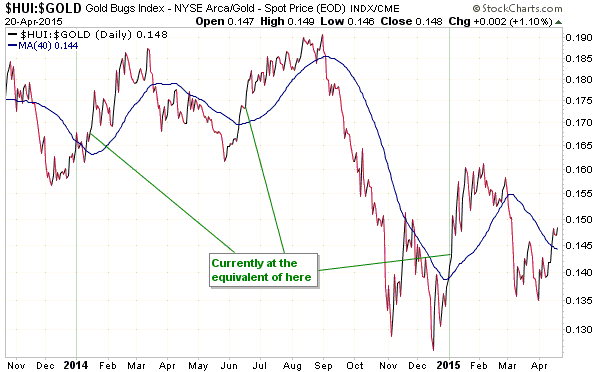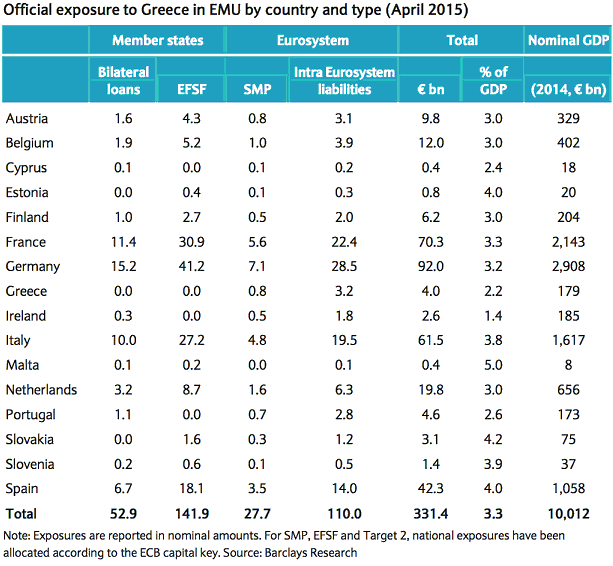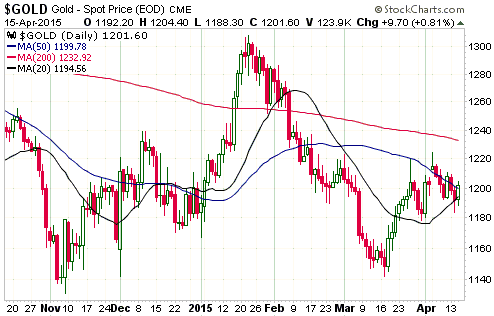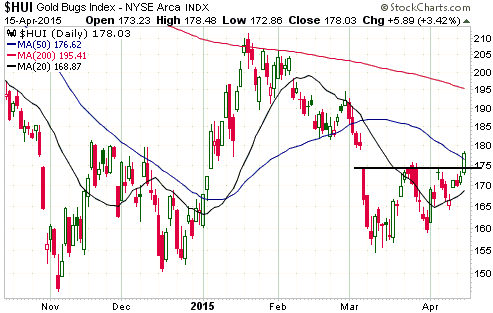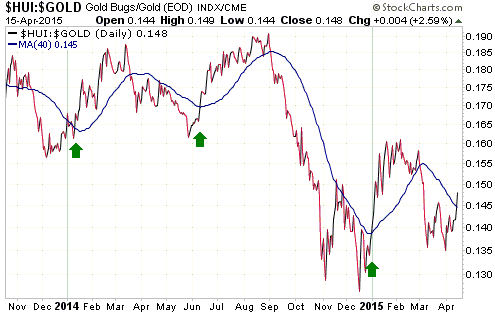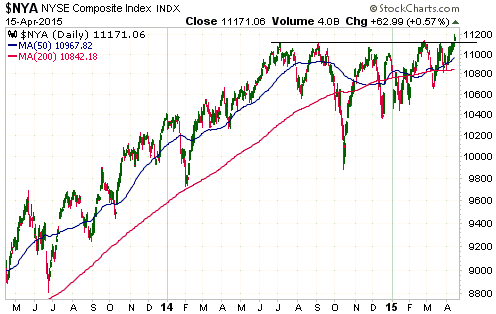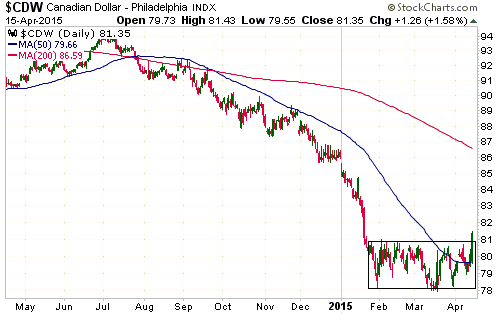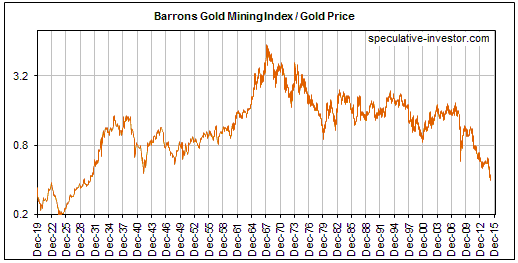At the beginning of last week I wrote that gold and the HUI were coiling, the implication being that a sharp 1-3 week move in one direction or the other would soon begin. There was no way of knowing the direction of the move, although the performance of the HUI/gold ratio relative to its 40-day moving average (MA) suggested that the direction would be up.
There were multiple head fakes last week, with a) gold bullion almost breaking out to the downside last Friday, b) the HUI chopping around near its 50-day MA, and c) the HUI/gold ratio being the only consistent indicator by sustaining its upside breakout. At this stage it looks like the HUI/gold ratio was sending the correct message, because both gold bullion and the HUI closed above the tops of their recent trading ranges on Tuesday 28th April.
The minor upside breakouts in gold-related stuff happened on the day before the Fed is scheduled to issue its next policy statement, which is out of character considering how gold has traded over the past 9 months. As noted in a commentary posted at TSI a few days ago, gold had closed lower over the course of the 5 trading days leading up to each of the past 6 FOMC meetings and would have stretched the negative pre-FOMC sequence to 7 if it had closed below $1201.80 on 28th April. Instead, it rebounded strongly and closed at $1211.50.
My thinking was that if the gold price had fallen over the first 2 trading days of this week it would have set the stage for a significant post-FOMC rebound, because the most likely outcome of this week’s FOMC meeting is a statement with almost no wording changes. No meaningful change to the wording of the Fed’s statement would mean that a June rate hike had effectively been taken off the table, which short-term speculators would undoubtedly view as gold-bullish (it’s actually irrelevant, but short-term moves are being driven by sentiment).
However, it seems that speculators have jumped the gun. As a result, buying in advance of Wednesday’s FOMC statement is now riskier. My guess is that gold and the gold-mining stocks will extend their gains if the Fed signals “no rate hike in June”, but there is now more downside risk associated with an unexpectedly ‘hawkish’ Fed statement.
 Print This Post
Print This Post

